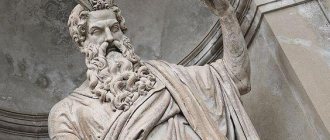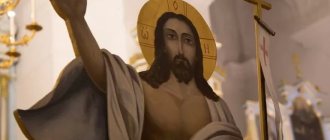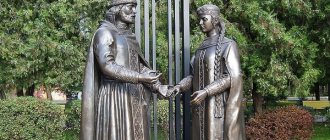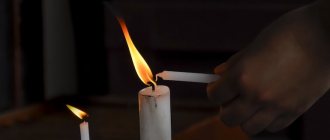In 2021, at the end of March, according to the ancient Slavic tradition, it is customary to sculpt larks from dough. This interesting ritual was inherited from our pagan ancestors, but has been preserved to this day without changes. If you don’t know when and how to sculpt birds, then I will be happy to tell you about the history of the origin of the ritual, and I will also share recipes for delicious buns and tricks for making them. So remember, and then surprise your household with homemade deliciousness.
Many people think that larks are traditionally baked for Easter, but this is not entirely true. Although, for the Bright Day, of course, you can prepare baked goods and please your loved ones. Initially, buns were baked in Rus' when spring finally came into its own - during the spring equinox. This is a pagan event that was considered one of the most important of the year, so people greeted it with great joy. Then, with the adoption of the Orthodox faith, the tradition did not become as popular as before, but the people (especially residents of villages) still remember it and continue to adhere to it.
When are larks baked in 2021?
Dough larks are baked in 2021 - March 22. This is one of the most important holidays in the Christian calendar. It was installed in honor of the Roman soldiers who adopted the Christian faith during the reign of the ancient Roman emperor Licinius, known for his negative attitude towards Christians. For refusing to renounce their faith, they were killed in Lake Sebaste. In memory of the courageous warriors, the strict Easter fast is even relaxed on this day.
For what holiday were larks made from dough baked and why?
For our ancestors, this day has long been a holiday of birds and the onset of spring. It is intertwined with the spring equinox, which falls on March 20 in 2021. The pagans baked birds from dough, told fortunes, and monitored the weather, anticipating the future harvest. Since birds return from “warm regions,” these creatures were greatly revered. After all, the South is the place where dead ancestors live, and birds are the link between the worlds of the dead and the living.
Housewives on this day baked forty birds from dough, making them in the shape of larks, magpies, and swallows. They sculpted wings, beaks, tails and made eyes from raisins or nuts. Lubricate the top with tea, yolks or honey, sprinkle with poppy seeds or sugar.
These pastries were hung on trees, eaten, and treated to neighbors and children. The crumbs were given to livestock or left in feeders.
There was a belief that birds returning from wintering carried the warm spring on their wings. And in order for the birds to return faster, they used to perform many rituals to which the kids were involved. In particular, the children sang freckles, and on March 22 they had the opportunity to enjoy delicious dough birds. They were baked the day before, decorated with ribbons, put on twigs and given to children. The task was very important: to run with them around vegetable gardens and huts, invite spring and raise them as high as possible, and in the evening the birds could be eaten. The bravest ones even climbed trees and roofs with the birds.
We suggest joining the tradition and also baking birds together with the kids, because there is nothing more valuable than spending interesting time with children.
The history of the holiday
March 22 is the day of the vernal equinox. On this day, the rays of the sun fall on the earth at right angles to the axis of its rotation - therefore, day becomes equal to night. Then it will only lengthen until the summer. This is a turning point: spring is coming into its own. The peasants ask for good weather and a big harvest. There are holidays dedicated to the day of the vernal equinox not only in Russia. However, other events were also celebrated in Rus' on this day.
What exactly to tell children and how depends on their age and the context of the holiday.
Memorial Day of the Forty Martyrs of Sebaste. A long time ago, our ancestors were pagans. Then the baptism of Rus' took place. And people began to believe in Christ. However, not all at once. For a long time it was possible to meet tribes of pagans. A sad story happened in 320 in what is now the beautiful country of Armenia. Pagan rulers forced sacrifices to pagan idols. Forty Christian friends served in the Roman regiment. In the city of Sebastia, they were captured and refused to pray to idols, saying that there is only one God - Jesus Christ. Then they were thrown into an icy lake. It was cold and a strong wind was blowing. The bodies of the warriors began to become covered with ice. And on the shore they flooded a bathhouse for those who would renounce Christ. They could go ashore and quickly warm up. The warriors endured. Suddenly a terrible gust of wind came and one could not stand it - he ran to the bathhouse. As soon as he stepped on the threshold of the bathhouse, he immediately fell and melted like ice. It was unbearable to endure the cold at night, but the 39 remaining soldiers bravely endured the torture. Suddenly the Heavenly Light illuminated the lake, warmed the water and the bodies of the dying soldiers. Seeing this, the soldier guarding the place of execution threw off his clothes and joined the Christian soldiers, shouting that he, too, believed in Christ. In the morning, the enemies were terribly surprised to see the soldiers alive. They brought them out of the water and set them on fire. The Orthodox Church honors the memory of these warriors - forty saints on March 22. And this day is often called “magpies” - the day of the Forty Martyrs of Sebaste. Now we are in Great Lent, but on this day it is weakened.
Day of welcoming spring: Magpie Day. Forty is a significant number for Rus'. Forty saints - forty martyrs. Forty forty. And the magpie (bird) is the least thought of on this day, only in the context that it also flies in and it is on this day that it builds a nest of forty twigs. Forty birds fly to Soroki. First up are the larks. They say: “The lark brought forty birds with him” and spring has come. According to the old belief, it is this day that gives people the strength to cope with the big spring-summer troubles, when “the day feeds the year.”
How to make larks from dough
We now know what holiday our ancestors baked larks from dough for, all that remains is to find out how to sculpt the birds.
There are several ways to make a lark from dough. But they are different for each type of test.
Making larks from yeast dough
The first method is the simplest - birds, by the way, keep their shape best.
✅ We make sausage from the dough.
✅ We tie it with a knot.
✅ From one end of the sausage we form a head with a beak, insert eyes-quarters of raisins. We make a tail at the other end and cut it with a knife to make feathers.
Second way.
✅ We also make sausage, but this time we fold it with a loop.
✅ The middle will be the head, and the ends of the loop will be the wings.
I liked this method less because the bird did not hold its shape very well.
Third way.
✅ We make two sausages and place them crosswise.
✅ We wrap the front end back and stick it to the middle, this will be the bird’s head. We press the edges of the sausages on the back and sides - these will be the tail and wings.
✅ Making eyes and feathers.
Making larks from shortbread dough
Lark cookies made from shortcrust pastry are not tied into a knot. Since the products are not voluminous, they are made in profile.
If you have a shape in the shape of a bird, then all you have to do is roll out the dough into a layer and cut out the desired shapes on it. If there is no form, then proceed as follows:
✔ Form the dough into a ball shape and roll it into a round layer.
✔Cut the circle into 8 equal parts. The sharp side is the head and beak.
✔On the bottom of the dough we make a vertical cut not in the middle. The top part should be wider than the bottom.
✔ We overlap the top strip with the bottom strip, forming a wing. Above is the body of a lark, below is the tail.
✔ Using a knife, we make cuts on the tail, imitating feathers.
Lenten recipe for larks
During Lent it is forbidden to eat animal products, so I suggest making buns according to this recipe. If you still thought that baking without eggs and milk is tasteless, I’ll tell you - you’re wrong.
Compound:
- 200 ml water;
- 4 cups flour;
- 100 g sugar;
- dry yeast – 10 g;
- salt - a pinch;
- raisins – 15 pcs.;
- lean vegetable oil – 100 ml.
How to cook:
Dissolve dry yeast and 2 tbsp in 100 ml of warm water. granulated sugar. It is better to do this in a spacious bowl, it will be more convenient. Place the dough in a warm place for 20-30 minutes until it doubles in size. Then pour the remaining water, vegetable oil and 3 cups of flour into it. Knead the dough; it will turn out a little runny.
Pour the remaining glass of flour onto the table, and then lay out the contents of the cup. Knead a thick, dense dough. It should become smooth and not stick to your hands. Place it back into the cup, cover with a towel and place it close to the radiator. Every 30-40 minutes check how much the mass has risen. Beat it with your hands until it settles.
Once the dough has risen 3 times, you can start making larks. Cut it into small identical pieces, then roll the flagella individually. Tie the sausage in a knot, pull out the spout at one end and insert raisins instead of eyes. On the other side, press the dough down a little and make cuts with a knife - feathers on the tail.
Preheat the oven to 180 degrees and bake the larks for 30-35 minutes. As soon as the smell of cooked buns starts coming from the oven, turn off the heat. To prevent them from falling off, do not rush to take them out right away: open the door of the stove and leave for 30-40 minutes. Then place the birds on a plate and serve with tea. Bon appetit!
Attention!
If the bottom of the baked goods begins to burn, but the top is not yet browned, then reduce the temperature by 20 degrees and move the baking sheet to a higher tier.
Shortbread larks
This recipe is popular among those who decide to give up yeast baked goods.
So, pour it into a cup:
✅ 1 kg of flour ✅ 30 g of yeast (can be replaced with dry yeast) ✅ 130 g of butter ✅ 1 glass of milk ✅ 1/2 cup of sugar ✅ 1 egg ✅ 50 g of raisins ✅ Pinch of salt
Take half the flour and mix the dough with all the ingredients in a bowl. Pour onto the table and mix thoroughly with the remaining flour. We form larks from the resulting dough, as shown above, and place in the oven for 10-12 minutes.
5 minutes before cooking, remove from the oven, brush with yolk and sprinkle with sugar. Place back in the oven.
The Story of the Lark
The lark is a small gray bird, slightly larger than a sparrow. Larks, like many other birds, fly to warm regions for the winter, but return to their homeland first - in early spring. Having arrived, they stay in flocks, jumping from thawed patch to thawed patch and feasting on last year’s plant seeds. They don’t like to fly into forests, so they live in fields, steppes, and meadows - they love space. Nests are made directly on the ground. Whether the horse has pressed the ground with its hoof or a hole has been left from something else, this is where the lark will bring out its children. They are gray and completely invisible in the low grass. A person can walk within a step of the nest and not notice it. Male larks are distinguished songbirds. They can sing for eight hours without a break, attracting a female to them.
A long time ago, people created a legend about the lark. It was as if God took a piece of earth and threw it up - and so a glorious bird with dull plumage appeared. The lark flies high - glorifies Christ. It is believed that larks pulled thorns from the crown of thorns on the head of the crucified Christ to ease his fate. You can see how the lark rises higher into the sky and sings, sings. And then he will fall silent and fly even higher - the people note: to confession to God himself.
Superstitions for the Magpie Festival
Whoever works on this day earns himself forty illnesses. You cannot wash, repair, or work in the field. Anything you do from hard work on the day of the holiday will cause harm or cause losses.
If the weather is warm, it’s time to sow peas, there will be a very good harvest. And to confirm their hopes, on this day they cooked pea porridge, baked pies with peas or fried peas.
A funny sign is to count bald men on this day. As many as there are in the village, there may still be as many frosty days after the Magpie holiday.
To tell fortunes on birds, you can add them to some “predictions” while molding them from dough. Put salt in one bun and a button in another. They also put in: a coin, a wedding ring, sugar, poppy seeds, and the like. Based on what kind of “surprise” a person received, he determined the future for the year: an early marriage, new clothes, a long journey or wealth.
Games for Magpies
Brook. A game symbolizing running spring streams. Children stand in pairs. Each couple joins hands and raises their hands up. The one who doesn’t get a pair (the leader) runs into the stream, takes whoever he wants, forming a pair that becomes the last. The one who is left without a partner becomes the leader. If children run fast, the stream moves quickly, like a real spring one.
Mother spring. An analogue of the game “Golden Gate”, only the chant is different: Mother Spring walks alone through the forests and fields. The first time is forgiven, the second is forbidden, and the third time I won’t let you in!
Lark. The ringing of a bell is like a lark's song. Children stand in a circle, close their eyes and put their hands behind their backs. The presenter rings the bell and hides it in the hands of one of the children. As soon as the bell stops, the children open their eyes and try to guess who has the bell. Whoever guessed correctly gets to drive and hide the bell.
Sun. This game requires a traditional device: a wheel on a stick with multi-colored ribbons tied to it. A leader is selected and stands nearby. The rest of the children take one ribbon, two at a time, and walk around in a circle, singing:
Sunshine, sunshine! Look out the window! Here your kids have eaten all the candy!
Presenter: One-two, don’t be a crow, but run like fire!
The pair closest to the leader throws the ribbon and runs in different directions around the circle. Whoever comes running first becomes a couple together with the leader in a circle. And the one who is late becomes the leader.
Fortune telling by larks
On the Feast of the Forty Martyrs, baked birds were generously seasoned with salt and coins were placed in them. Anyone who received such a “lucky” bird had many chances to become well-fed, rich, and satisfied with life.
On this spring holiday, fortune telling was also performed by unmarried girls. They threw the bread lark back over their right shoulder and watched where the bird's beak would point. It was in that place that it was worth looking for the groom.
There was another type of fortune-telling, for which, having gathered together, the girls baked not only larks, but also waders. They were laid out at the doorstep and allowed to be sniffed by the dog. The girl whose bird was the first to be eaten by the animal had to get married before anyone else. In addition, it was believed that happiness awaited her in family life with a handsome, kind, generous and affectionate husband.
Found a violation? Report content










